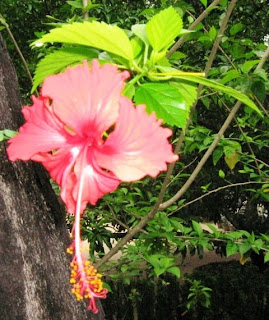I am back at my native village, Olavipe. The news that greeted me on arrival on the 23rd of this month was a sad one. Nurse Elizabeth of the nearby Community Health Center had died at the age of 52. She had been in good health apparently, but suddenly developed some discomfort and breathed her last in a hospital the next day.
Everybody here has only nice things to say about Elizabeth. Many households in the village had benefited from the healing touch of this kindhearted lady. She was available to provide medical aid to the needy any time of the night or day. And she never took money for the humane service she rendered.
When Ammachi (Oru Desathinte Amma.) was sick, in 1995, Elizabeth was of much assistance. We gratefully remember her help.
She will be greatly missed by the entire village. The general expectation is that Elizabeth’s daughter who would be completing her nursing studies in a few months would step into her mother’s shoes.
A good nurse, I should think, is as much a product of formal studies as aptitude. She would have an inherent inner quality from which comes compassion and dedication.
A great nurse, Mother Teresa, used to distribute to her visitors an yellow slip printed with the following words:
“The fruit of Silence is Prayer
The fruit of Prayer is Faith
The fruit of Faith is Love
The fruit of Love is Service
The fruit of Service is Peace.”
May Elizabeth’s soul rest in peace.
Ends.
Note: The source of the anecdote about Mother Teresa is FAITH AND COMPASSION, The Life and Work of Mother Teresa. Raghu Rai & Navin Chawla. Element Books, Shaftsbury, Dorset. 1996.
Also see: Old man of the fields
















































